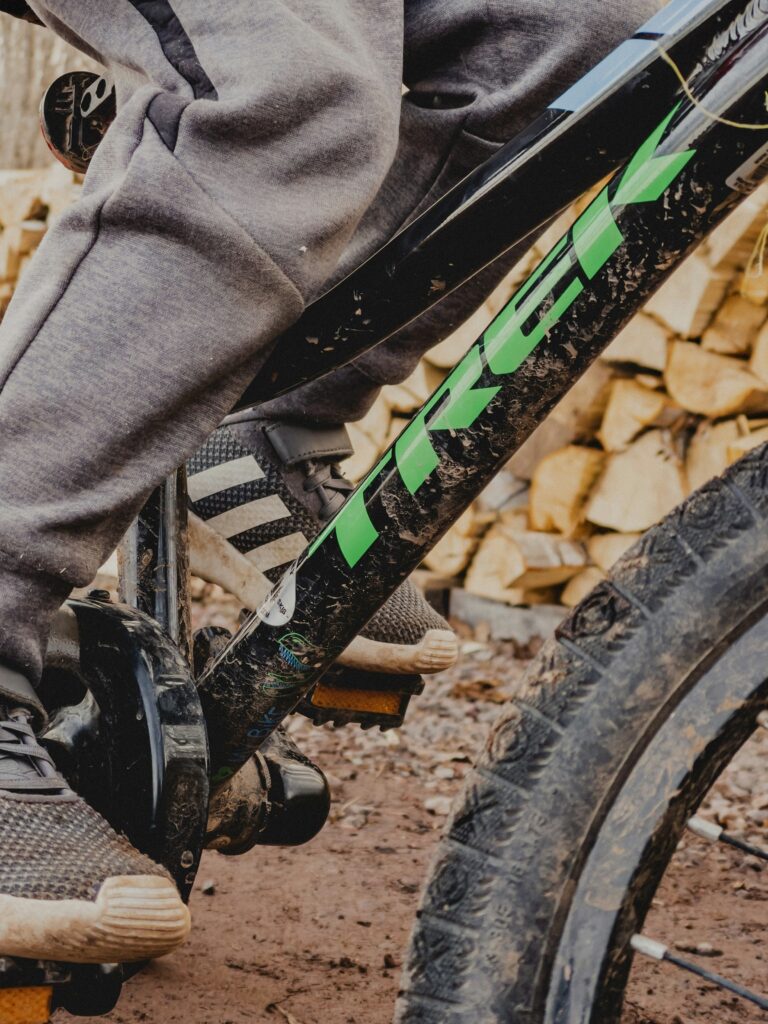Have you ever wondered if misaligned wheels can lead to unnecessary tire replacements? It’s a valid concern that many drivers have, and the answer might surprise you. In this article, we’ll explore the impact of misaligned wheels on your tires and how it can affect their lifespan. So buckle up and get ready to uncover the truth behind this common automotive dilemma.
Introduction
Understanding wheel alignment
Wheel alignment refers to the adjustment of the angles of the wheels so that they are parallel to each other and perpendicular to the ground. It involves adjusting the camber, toe, and caster angles to ensure optimal tire contact with the road surface.
Importance of proper wheel alignment
Proper wheel alignment is crucial for a smooth and safe driving experience. It not only ensures that the vehicle tracks straight and true but also maximizes tire life, improves fuel efficiency, and enhances overall vehicle performance. When wheels are misaligned, it can lead to various issues that can ultimately result in the need for unnecessary tire replacements.
Effects of Misaligned Wheels on Tires
Uneven tire wear
One of the most visible effects of misaligned wheels is uneven tire wear. When the alignment is off, certain parts of the tire tread will experience more pressure and friction than others. This causes the tread to wear down at an uneven rate, leading to premature tire wear and decreased tire lifespan.
Increased tire wear
In addition to uneven tread wear, misaligned wheels can also cause increased overall tire wear. When the wheels are not aligned properly, they create excessive friction against the road, causing the tires to wear out more quickly. This can result in the need for frequent tire replacements, adding unnecessary expenses.
Reduced tire lifespan
Due to the increased wear caused by misaligned wheels, the overall lifespan of the tires is significantly reduced. Rather than getting the expected mileage out of your tires, you may find yourself replacing them sooner than necessary. This not only adds to your costs but also disrupts your driving experience.
Risk of blowouts and punctures
When wheels are misaligned, the uneven pressure on the tires can weaken their structure. This increases the risk of blowouts and punctures, especially when driving over road hazards or sharp objects. A blowout can be extremely dangerous and can lead to loss of control over the vehicle, potentially causing accidents.
Cost of frequent tire replacements
The need for frequent tire replacements due to misaligned wheels can quickly add up in terms of expenses. Tires are a significant investment, and having to replace them more often than necessary can strain your budget. By ensuring proper wheel alignment, you can avoid these unnecessary costs and preserve the longevity of your tires.

Common Causes of Wheel Misalignment
Pot holes and road hazards
Pot holes and road hazards can wreak havoc on your wheels’ alignment. When you hit a pothole or encounter a road hazard, the impact can knock your wheels out of alignment. It is essential to exercise caution and avoid such obstacles whenever possible.
Driving over curbs or speed bumps
Driving over curbs or speed bumps at high speeds or with excessive force can also lead to wheel misalignment. The impact from these maneuvers can cause the suspension to shift, affecting the alignment of the wheels.
Worn suspension components
Worn suspension components, such as ball joints, control arms, or bushings, can contribute to wheel misalignment. When these components become worn or damaged, they no longer hold the wheels in the correct position, resulting in misalignment.
Improper installation of suspension parts
During suspension repairs or upgrades, it is crucial to ensure that all components are installed correctly. Improper installation can throw off the wheel alignment and lead to a variety of issues.
Signs of Wheel Misalignment
Uneven tread wear
Uneven tread wear across the tires is a clear indication of wheel misalignment. If you notice that one side of the tire is significantly more worn than the other side or that the center or edges are wearing faster, it is likely that your wheels are misaligned.
Vehicle pulling to one side
Another common sign of wheel misalignment is when the vehicle pulls to one side while driving. When the wheels are not aligned correctly, the vehicle will have a tendency to drift or veer in one direction, even if you attempt to steer straight.
Steering wheel vibration
If you feel a vibration or shimmy in the steering wheel while driving, it can be a sign of wheel misalignment. When the wheels are out of alignment, they can cause uneven tire contact with the road, leading to vibrations that are transmitted through the steering system.
Crooked steering wheel
A crooked steering wheel, where it is not aligned with the vehicle’s center, can indicate wheel misalignment. This misalignment can affect the overall handling of the vehicle and should be addressed promptly.
Strange noises while driving
Misaligned wheels can also create unusual noises while driving. You may hear squealing or chirping sounds coming from the tires, indicating that they are not contacting the road evenly. These noises should not be ignored and should be investigated further.

Effects of Misaligned Wheels on Vehicle
Poor handling and stability
When the wheels are misaligned, it can negatively impact the vehicle’s handling and stability. The vehicle may feel less responsive to steering inputs, and it may become more difficult to maintain control, especially in emergency situations. Proper wheel alignment ensures that the vehicle handles properly and maintains stability.
Reduced fuel efficiency
Misaligned wheels can also contribute to reduced fuel efficiency. When the wheels are not aligned correctly, the vehicle has to work harder to overcome the resistance caused by uneven tire contact with the road. This increased resistance leads to increased fuel consumption and decreased fuel efficiency.
Increased stress on suspension components
Misaligned wheels place additional stress on the suspension components of the vehicle. As the tires fight against each other due to misalignment, it causes excessive strain on the suspension system, leading to premature wear and potential failure of components. This can result in costly repairs down the line.
Uncomfortable ride experience
Driving with misaligned wheels can make for an uncomfortable ride experience. The vehicle may feel “bumpy” or unstable, and you may notice more vibrations and road imperfections. Improper wheel alignment can affect the overall comfort of your drive by impacting the smoothness and stability of the vehicle.
Importance of Regular Wheel Alignment
Preventing unnecessary tire replacements
One of the most significant benefits of regular wheel alignment is the prevention of unnecessary tire replacements. By ensuring that your wheels are properly aligned, you can avoid premature tire wear and extend the lifespan of your tires. This saves you from the inconvenience and expense of having to replace your tires frequently.
Improving overall vehicle performance
Proper wheel alignment plays a crucial role in improving the overall performance of your vehicle. When the wheels are aligned correctly, it promotes optimal tire contact with the road surface, ensuring better traction and handling. This, in turn, enhances the vehicle’s maneuverability and responsiveness, allowing for a more enjoyable driving experience.
Enhancing safety on the road
Maintaining proper wheel alignment is essential for your safety on the road. Misaligned wheels can compromise the vehicle’s handling and stability, leading to increased risks of accidents or loss of control. By having regular wheel alignments, you can ensure that your vehicle is operating at its safest, reducing the chances of unpredictable incidents.
Reducing maintenance costs
Regular wheel alignment can help reduce overall maintenance costs. By addressing any alignment issues promptly, you can prevent additional wear and tear on other components, such as the suspension system. This reduces the likelihood of costly repairs and prolongs the lifespan of various parts of your vehicle.

Professional Wheel Alignment
Choosing a reputable auto service center
When it comes to professional wheel alignment, it is crucial to choose a reputable auto service center. Look for a center that specializes in alignment services and has experienced technicians who use state-of-the-art equipment. Reading online reviews and seeking recommendations from friends and family can help you find a trustworthy establishment.
Frequency of wheel alignment
The frequency of wheel alignments depends on various factors, including driving conditions and vehicle use. As a general guideline, it is recommended to have your wheels aligned at least once a year or every 10,000 to 12,000 miles. However, if you frequently drive on rough roads or encounter potholes, you may need more frequent alignments.
Alignment techniques and equipment
Professional auto service centers utilize advanced alignment techniques and equipment to ensure accurate results. These may include computerized alignment machines that measure the angles of the wheels with precision. By using such equipment, technicians can make precise adjustments to achieve the correct alignment, improving the overall performance of your vehicle.
Cost considerations
The cost of professional wheel alignment can vary depending on several factors, such as the location, the make and model of your vehicle, and any additional services required. While there may be a cost associated with wheel alignment, it is an investment that can save you money in the long run by preventing unnecessary tire replacements and ensuring the longevity of your tires.
DIY Wheel Alignment
Tools and equipment needed
Performing a DIY wheel alignment requires specific tools and equipment. These may include a jack, jack stands, a measuring tape or string, a wrench, and an alignment gauge. It is important to ensure that you have all the necessary tools before attempting to align your wheels on your own.
Step-by-step alignment process
The step-by-step process of DIY wheel alignment involves several stages. First, you start by setting up the vehicle on a level surface and measuring the current alignment angles. Next, you make the necessary adjustments to align the wheels correctly by adjusting the tie rods or camber bolts. Finally, you recheck the alignment and make any fine-tuning adjustments as needed.
Limitations and risks
While DIY wheel alignment may seem cost-effective, it is important to note its limitations and potential risks. Wheel alignment is a precise process that requires specialized equipment and expertise. Without proper knowledge and experience, there is a risk of improperly aligning the wheels, which can lead to further issues and potentially compromise your safety on the road. It is recommended to leave wheel alignment to trained professionals unless you have the necessary knowledge and tools.

Tips for Preventing Wheel Misalignment
Avoiding road hazards
To prevent wheel misalignment, it is crucial to exercise caution and avoid road hazards whenever possible. Be mindful of potholes, debris, and other obstacles that can impact the alignment of your wheels. By driving defensively and being aware of your surroundings, you can minimize the risk of encountering road hazards that can throw off your wheel alignment.
Driving cautiously
Driving cautiously is another effective way to prevent wheel misalignment. Avoid excessive speeding, aggressive driving maneuvers, and abrupt stops or turns, as these actions can place unnecessary strain on your vehicle’s suspension and alignment. Practicing smooth and controlled driving habits can help preserve proper wheel alignment.
Regular tire maintenance
Regular tire maintenance plays a significant role in preventing wheel misalignment. This includes maintaining proper tire pressure, rotating the tires at recommended intervals, and ensuring adequate tread depth. Well-maintained tires are less likely to contribute to misalignment issues and can help prolong the lifespan of your tires.
Checking suspension components
Regularly inspecting your vehicle’s suspension components can help identify any issues that may contribute to wheel misalignment. Look for signs of wear, damage, or looseness in components such as ball joints, control arms, and bushings. If you notice any abnormalities, have them inspected and repaired by a professional to ensure proper wheel alignment.
Conclusion
Understanding the impact of wheel misalignment
Misaligned wheels can have significant consequences on both your tires and your vehicle’s overall performance. Uneven tire wear, reduced fuel efficiency, and poor handling are just a few of the effects that can result from wheel misalignment. It is essential to understand the importance of proper wheel alignment and the potential risks associated with driving with misaligned wheels.
Taking proactive measures to preserve tire lifespan
By taking proactive measures such as regular wheel alignments, you can preserve the lifespan of your tires and avoid unnecessary tire replacements. Regular alignment not only enhances the safety and performance of your vehicle but also reduces maintenance costs in the long run. Whether you opt for professional wheel alignment or DIY alignment, prioritizing alignment maintenance is key to ensuring a smooth, safe, and cost-effective driving experience.


